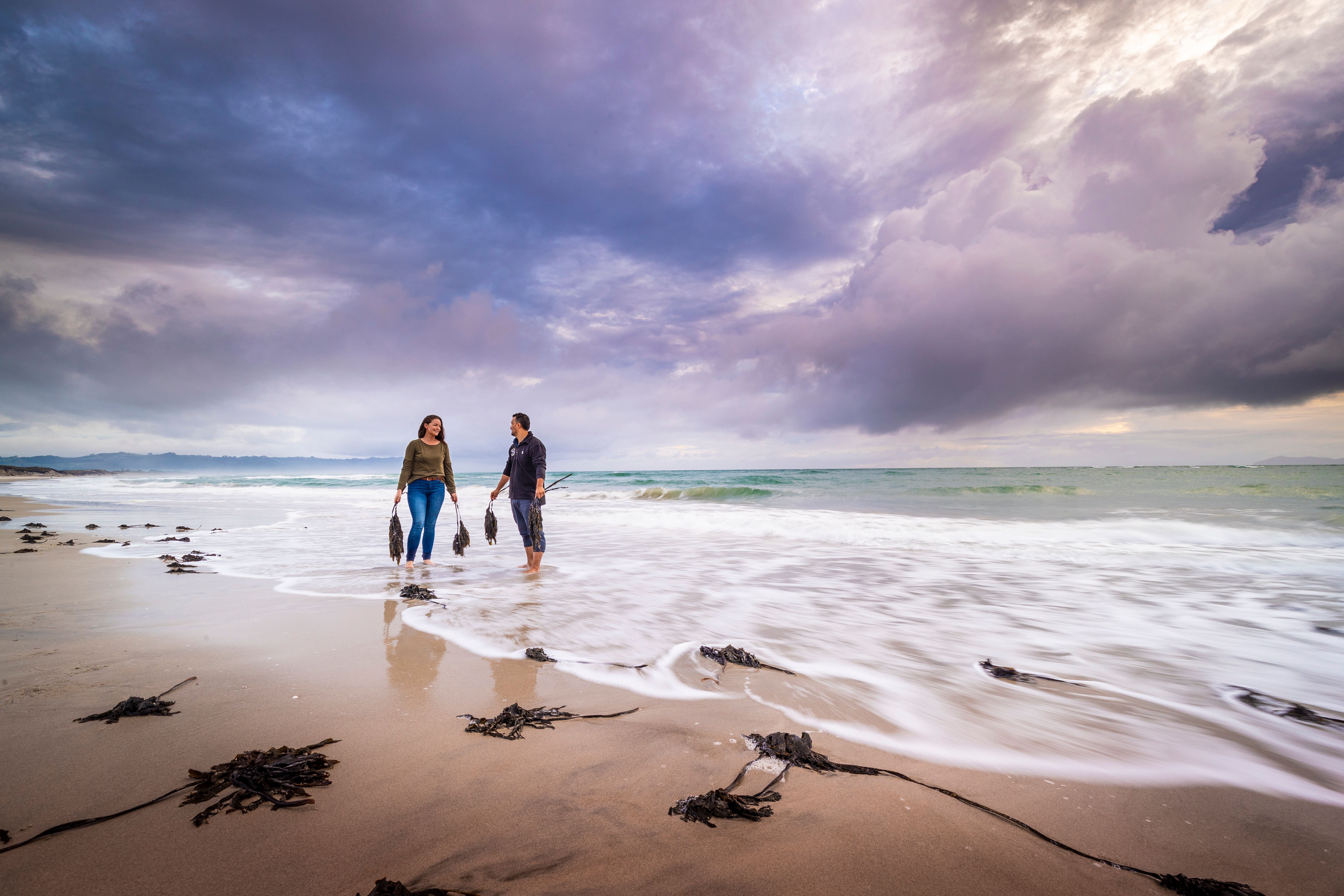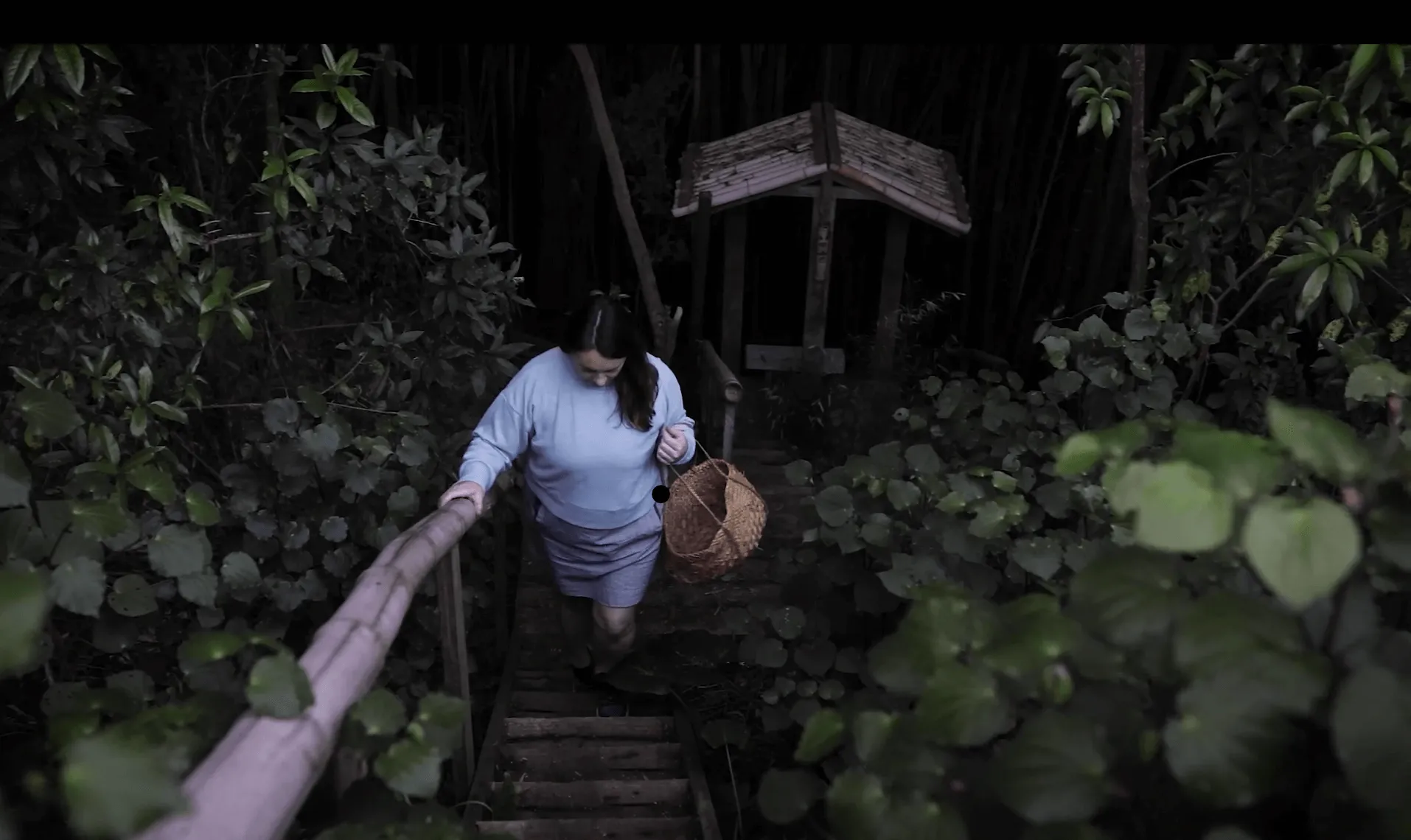
Lisa Reihana
Lisa Reihana (Ngāpuhi, Ngāti Hine, Ngāi Tū) is a contemporary multimedia artist from Aotearoa New Zealand, known for her innovative approach to blending traditional Māori art and storytelling with modern technology, and prompting people to revisit and reframe both history and modern-day life. Her work has won her global recognition and cemented her status as one of New Zealand’s most important cultural figures.

“Being an artist allows me to meet people from all sorts of different backgrounds and histories… plus, you’ve got to do something with that knowledge.”
Born in 1964, Lisa’s career began in 1987, at the Elam School of Fine Arts at the University of Auckland, where she developed her skills in various mediums, including painting, sculpture and photography, before transitioning to video and installation work. In the 1990s, she became known for her immersive video installations that explored issues of colonialism, race and gender, and showcased her ability to blend different cultural influences.
In 1990, Lisa created her reknowned animation film Wog Features, a work that examined the complexities of multicultural society. Digital Marae (2001) employed large-scale photography, short videos and aural soundscapes to create an environment that was a rich meditation on Māori in modern times. Lisa also completed a major commission for the Museum of New Zealand Te Papa Tongarewa in 2008, installing the work Mai i te aroha, ko te aroha (From love, comes love) at one of the entrances to the museum’s marae.
Arguably Lisa’s most notable work is the spectacular In Pursuit of Venus [infected], a video installation that was first exhibited at Auckland Art Gallery Toi o Tāmaki in 2015, and later presented at the 57th Venice Biennale in 2017. It is a multi-channel video installation that reimagines Joseph Dufour’s late-18th-century French wallpaper, Les Sauvages de la Mer Pacifique (The Savages of the Pacific), which depicted Pacific Island people as exotic and primitive. Lisa transformed it into a dynamic, moving panorama that incorporated live actors and digital animation.
Lisa has eloquently described the original as “a concoction, a fabulation invented in someone else’s elsewhere”. Her revision challenges the colonial narrative by portraying the Pacific people as dignified and sophisticated (according to the colonial lens), while also exploring the complexities of cultural exchange and appropriation.
When asked what she wants or expects of its viewers, Lisa responds:
“To indicate there’s a level of complexity. To elicit some kind of empathy and alert people to some of that history. So I’m not pointing the finger at anyone, it’s a soft diplomacy.”
Place and perception are integral to both pieces, a phenomenon not lost on Lisa:
“That was really special – bringing the Pacific to the old world, arriving on their boat, and being greeted by their people. This performs a reversal of arrival, re-enacting these ceremonies and moments of encounter where it’s not just about colonisation but people’s curiosity about each other. I mean, why do we travel? Why do we go to far-flung places? It’s because we’re curious, and seeing ourselves in sharp relief from home is one of the great values of travel. I think you begin to understand yourself differently when you are somewhere else.”
More recent works include Tai Whetuki – House of Death Redux (2016), a two-channel video installation that depicted Māori and Pacific Island cultural practices associated with death. Lisa’s photo-based and sculptural works explore notions of beauty, authenticity, history, and myth – and demonstrate the continuing relevance of Lisa’s commentary and creativity.
Lisa’s impact on the art world extends beyond her own practice. She has also curated exhibitions and film screenings for institutions, and has mentored younger artists through her teaching practice at Auckland University, Manukau Institute of Technology, and Unitec.
Lisa has exhibited internationally, and her work is held in major public and private collections worldwide, including Museum of New Zealand Te Papa Tongarewa, Wellington; Auckland Art Gallery Toi o Tāmaki; Australia National Gallery, Canberra, Gallery of Modern Art, Queensland, and Art Gallery of New South Wales in Australia; Los Angeles County Museum, Susan O’Connor Foundation, Texas, and Brooklyn Museum, New York City, in the USA; and at Art Gallery of Ontario, Canada.
“I try to push representations of gender and ways of seeing,” Lisa says. “For instance... I’ve looked at Tupaia, the Tahitian navigator who travelled with Captain Cook. When he came to New Zealand, Māori thought the Endeavour was his, because he was the one who could communicate with Māori, and he conducted the ceremonies, which is completely different to the way the English perceived him. So – examining ways of looking and seeing and perceptions of knowing.”
In recognition of her contributions to the arts, Lisa was made a Member of the New Zealand Order of Merit in 2018, and a Companion of the New Zealand Order of Merit in 2022; in 2017 she was given a Distinguished Alumni Award from the University of Auckland; she also received the Te Tohu Toi Kē Te Waka Toi award in 2015 and became an Arts Laureate in 2014.
Explore the Legacy Project
.jpg)
Explore the Legacy Project
.jpg)
Explore the Legacy Project
.jpg)


.jpg)


